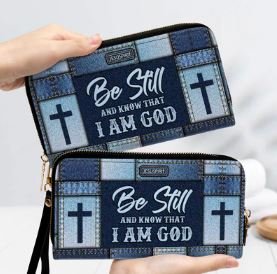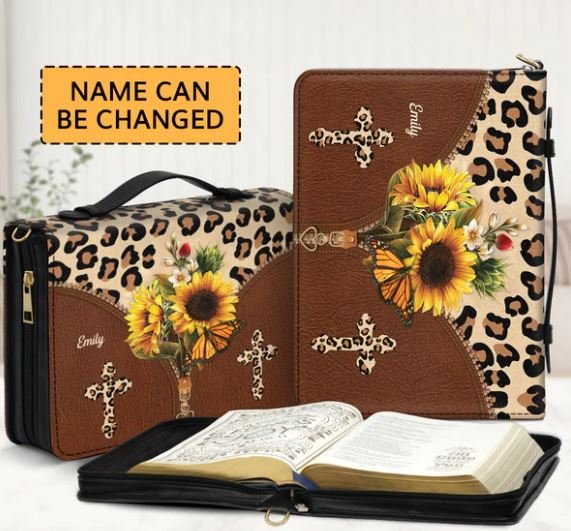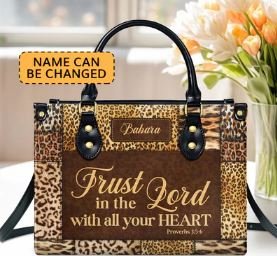Unveiling the Mystery: The Seder Plate's Deep Connection to Jesus and Christian Faith
As an Amazon Associate, I earn from qualifying purchases. This page contains affiliate links. If you choose to make a purchase after clicking a link, I may receive a commission at no extra cost to you.
Visit our Holy Spirit Gear Store- - - - - ->>> HERE <<< - - - - - - New items Weekly
As I sit to write down these thoughts, the fragrance of history and tradition seems to waft through the air, transporting me back to the times of Moses and then, seamlessly, to the cobblestone streets of Jerusalem under Roman rule. The Seder Plate, a centerpiece of the Passover meal, laden with symbols of Israel's ancient bondage and miraculous exodus, whispers tales of redemption and sacrifice. But, as a follower of Christ, I see more than just Jewish tradition in its elements; I see a profound connection to Jesus, the Lamb of God, whose life and death fulfill the deepest meanings of these symbols. This exploration is not just an academic exercise but a spiritual journey, tracing the scarlet thread of redemption woven through Scripture, from Exodus to the Gospels.
Understanding the Seder Plate
At the heart of the Passover meal lies the Seder Plate, a platter bearing items each rich with historical and spiritual significance. To understand its depth, we dive into its origins, found in the book of Exodus, where God instructs the Israelites on the eve of their miraculous deliverance from Egyptian bondage. Each item on the plate—Karpas, Charoset, Maror, Chazeret, Z'roa, and Beitzah—serves as a tactile reminder of the Israelites' suffering and God's salvation.
As Christians, we are invited to look beyond the surface, to see in the Passover narrative a shadow of the greater deliverance wrought by Christ on Calvary. Through this lens, the Seder Plate becomes a bridge connecting two covenants, a tangible representation of God's unchanging plan of redemption. As we examine each element, let us seek the echoes of Jesus' life, death, and resurrection, finding in these ancient symbols a fresh revelation of His eternal love and sacrifice.
The Lamb (Shank Bone) and Jesus as the Lamb of God
One of the most striking elements of the Seder Plate is the Z'roa, the lamb shank bone, symbolizing the lamb sacrificed during the first Passover. This act of faith and obedience was crucial for the Israelites, marking their doorposts with the lamb's blood to be spared from the plague of the firstborn (Exodus 12:3-11). This imagery is potent and prophetic, foreshadowing the ultimate sacrifice for salvation.
As a Christian, I can't help but draw parallels to John the Baptist's declaration upon seeing Jesus: "Behold the Lamb of God, who takes away the sin of the world!" (John 1:29). This declaration and Jesus' crucifixion during Passover intertwine the Old and New Testaments in a divine symphony of redemption. Paul’s epistle to the Corinthians reinforces this, referring to Christ as "our Passover lamb" (1 Corinthians 5:7), sacrificed to free us not from physical bondage but the shackles of sin and death.
In every Seder, as the shank bone is presented, I see a powerful reminder of Jesus' sacrifice. The lamb's blood that once marked doorposts now marks our hearts, a testament to God's grace and the fulfillment of a promise made centuries before. This parallel invites a reflection on the depth of God's plan for salvation, intricately woven through the fabric of history.
Maror: The First Bitter Herbs and the Bitterness of Slavery/Sin
Another essential component of the Seder Plate is the Maror, bitter herbs, traditionally eaten to recall the bitterness of slavery in Egypt (Exodus 12:8). This physical act of eating something bitter is a visceral reminder of the Israelites' suffering and the harshness of servitude. Freshly grated horseradish is widely used because of its intense sharpness and heat, which can quickly bring tears to the eyes, serving as a physical manifestation of the tears shed by the Israelites. Horseradish can be quite potent, especially when it is freshly grated, symbolizing the acute bitterness of oppression
The New Testament offers a spiritual parallel in the concept of sin as bondage. Paul writes in Romans that we were once slaves to sin but have been set free through Christ (Romans 6:17-18). The bitterness of the herbs can thus be seen as symbolizing not only the physical bondage of the Israelites but also the spiritual bondage from which Jesus has freed us.
This connection deepens the meaning of the Seder for Christians, emphasizing Jesus' role as the liberator not from earthly oppressors but from the dominion of sin. The bitterness of the herbs, then, becomes a call to remember our own liberation story, a story of passing from death to life, from the slavery of sin to the freedom of righteousness in Christ.
Chazeret: The Second Bitter Herb
The Seder Plate traditionally includes a second type of bitter herb, known as Chazeret, often represented by romaine lettuce. While Maror is used to fulfill the commandment to eat bitter herbs during the Seder, Chazeret serves to reinforce this symbolism, with its bitterness hidden in the root, not immediately apparent in its leafy exterior. This dual aspect of Chazeret—its deceptive appearance belying the bitterness within—mirrors the complexities of sin and suffering in our world and the profound redemption offered through Jesus Christ.
In the Christian interpretation, Chazeret's hidden bitterness can symbolize the subtlety of sin, how it can be insidious and not always apparent at first glance. This reflects Jesus' teachings on vigilance and self-examination, urging His followers to look beyond the surface and recognize the deeper spiritual realities at play (Matthew 23:25-28). Jesus, through His ministry, exposed the true nature of sin and righteousness, challenging superficial religious piety and calling for genuine transformation of the heart.
Moreover, the use of Chazeret in the Passover meal points to the broader theme of redemption. Just as the Israelites were delivered from the bitterness of slavery in Egypt, so too does Jesus offer deliverance from the bitterness of sin. This promise of redemption is beautifully encapsulated in the prophecy of Isaiah, foretelling the coming of a savior who would bear our griefs and carry our sorrows (Isaiah 53:4). Jesus' crucifixion and resurrection fulfill this prophecy, offering hope and salvation to all who believe in Him.
Charoset and the Mortar of Hope
Charoset, a sweet mixture of fruits, nuts, and wine, represents the mortar the Israelites used in their forced labor. Yet, its sweetness contrasts with the bitterness of the herbs, offering a symbol of hope and resilience even in the face of suffering.
In the Christian narrative, this sweetness reflects the hope we find in Christ, a hope that transcends the bitterness of life's trials. The Psalmist proclaims, "Taste and see that the LORD is good" (Psalm 34:8), a sentiment echoed in Paul's letter to the Romans, where he speaks of the joy and peace that come from believing in Christ (Romans 15:13).
The Charoset invites us to contemplate the sweetness of salvation offered through Jesus, a salvation that not only rescues us from sin but also infuses our lives with hope, joy, and peace. It's a reminder that, amidst the bitterest circumstances, God's love and promise of redemption remain a constant source of sweetness and light.
Karpas and Renewal in Christ
The Karpas, a green vegetable typically parsley, dipped in salt water during the Seder, symbolizes the freshness of spring and the tears of the Israelite slaves. This act of dipping and the contrast of flavors speak to the complexities of life—moments of freshness and renewal marred by the tears of suffering.
For Christians, this element of the Seder resonates with the themes of renewal and rebirth found in baptism. Just as the Karpas is submerged in water, so are we immersed in water in baptism, symbolizing our death to sin and rebirth into new life with Christ. "Therefore, if anyone is in Christ, the new creation has come: The old has gone, the new is here!" (2 Corinthians 5:17). Similarly, Romans 6:4 speaks to this new life: "We were therefore buried with him through baptism into death in order that, just as Christ was raised from the dead through the glory of the Father, we too may live a new life."
The Karpas, then, becomes a poignant reminder of the new life and hope we have in Jesus. It encourages us to reflect on our own spiritual journey, recognizing the moments of renewal God grants us, even amidst the trials that may bring tears to our eyes.
The Egg (Beitzah) and New Life
The Beitzah, a roasted egg on the Seder Plate, symbolizes the festival sacrifice that was offered in the Temple in Jerusalem and also represents the cycle of life and death, mourning and rebirth. Its presence is a reminder of the Temple's destruction and the hope for its rebuilding.
In Christian thought, the egg stands as a powerful symbol of resurrection and new life, themes central to the message of Easter. Jesus' resurrection is the cornerstone of Christian faith, as He conquered death, offering eternal life to all who believe in Him. This promise is beautifully encapsulated in Jesus' words: "I am the resurrection and the life. The one who believes in me will live, even though they die" (John 11:25-26).
Thus, when we look at the Beitzah, we are reminded not only of the historical sacrifices but also of the ultimate sacrifice Jesus made on our behalf. His resurrection is the guarantee of our own, a testament to the new life we are granted in Him. This egg, a simple yet profound symbol, invites us to embrace the hope of the resurrection, celebrating the new life that comes through Jesus Christ.
Recommended Books to Further Study the Subject
As we conclude our journey through the Seder Plate and its deep connections to Jesus and His teachings, it becomes clear that these ancient symbols offer rich layers of meaning for Christians. Each element, from the lamb shank bone to the bitter herbs, the charoset, the karpas, and the egg, weaves a narrative of suffering, hope, and redemption that resonates with the core truths of the Christian faith.
Reflecting on the Seder Plate, we are invited to see the continuity of God's redemptive plan, from the Exodus to the resurrection. These symbols, steeped in Jewish tradition, enrich our understanding of Jesus' life, death, and resurrection, offering a tangible connection to the biblical narratives that shape our faith.
I encourage you, dear readers, to dive deeper into these connections, to explore the rich tapestry of our faith that spans centuries and cultures. Let the story of the Passover and the symbolism of the Seder Plate inspire you this Easter season to reflect on the profound love and sacrifice of Jesus Christ. May we all come to appreciate more fully the depth of our redemption and the hope of our resurrection in Him.















